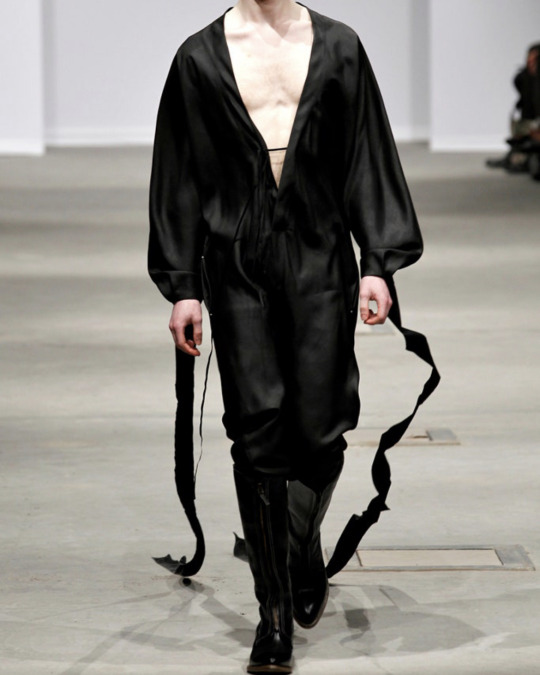#the swedish school of textiles
Photo

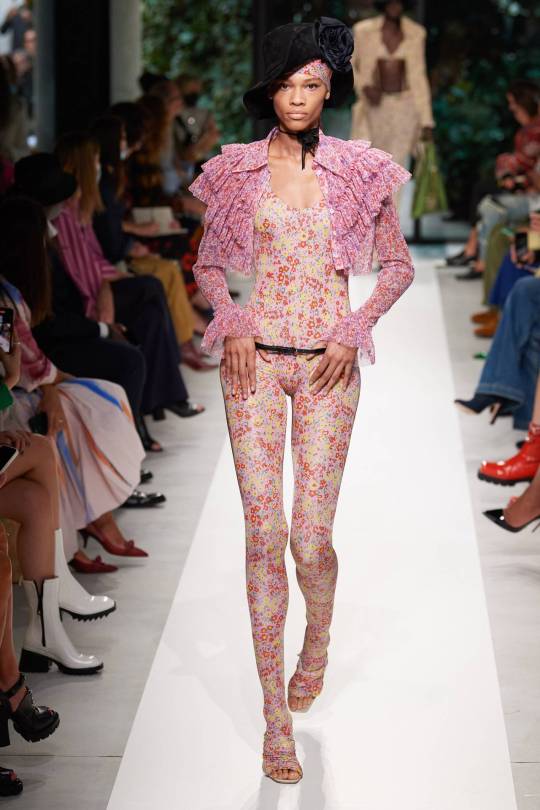





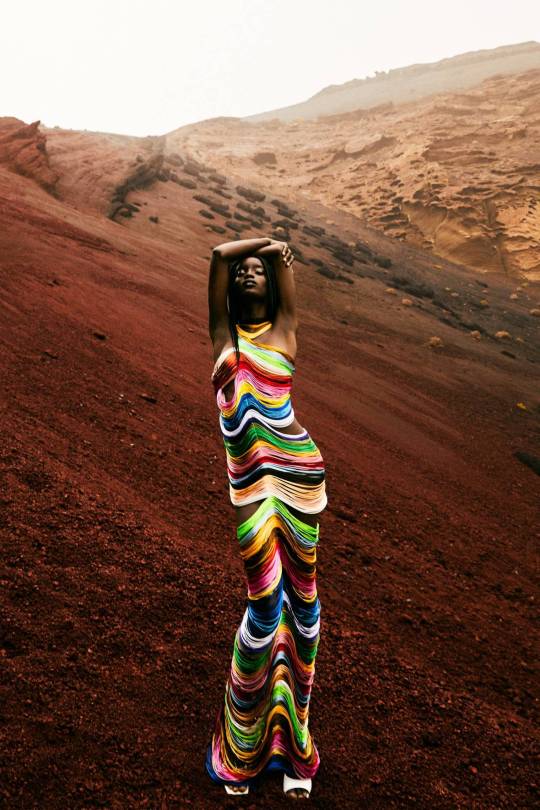


Milan + World Spring 2022 (Part 2)
Palomo Spain (Madrid)
Philosophy di Lorenzo Serafini
Ryunosuke Okazaki (Tokyo)
Sara Battaglia
Shuting Qiu (Shanghai)
Stine Goya (Copenhagen)
Susan Fang (Shanghai)
The Attico
The Swedish School of Textiles (Stockholm)
Versace X Fendi
#favorites#Best of Spring 2022#Palomo Spain#Philosophy di Lorenzo Serafini#Ryunosuke Okazaki#Sara Battaglia#Shuting Qiu#Stine Goya#Susan Fang#The Attico#The Swedish School of Textiles#Versace x Fendi#Minnie Warren#Jane Kovich#Guusje Stavast#Maty Fall#Adut Akech#milan fashion week#Spring 2022#models#fashion
21 notes
·
View notes
Text

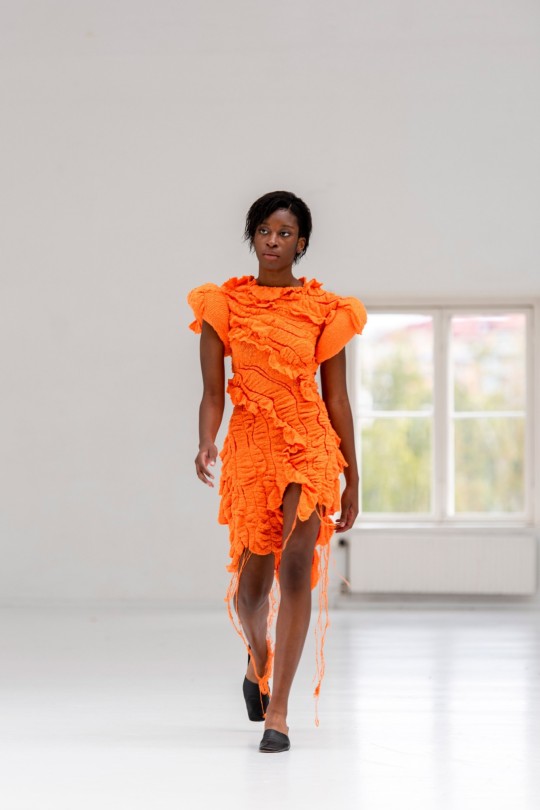
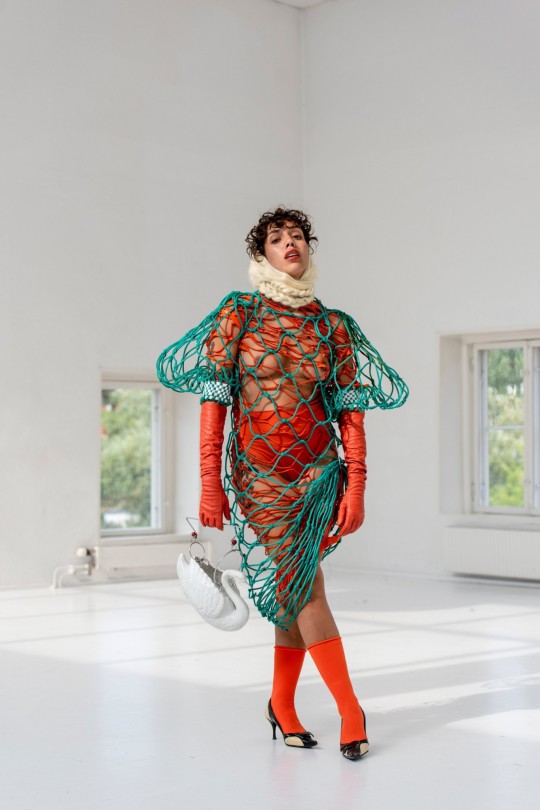
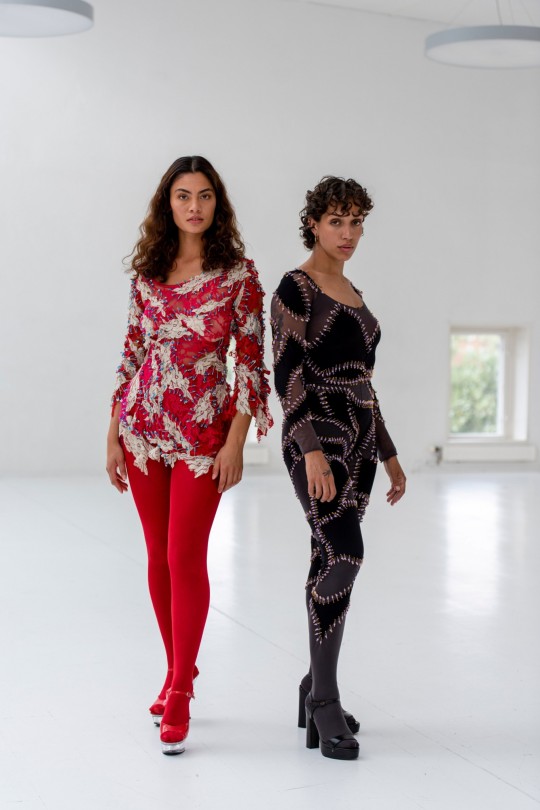
The Swedish School of Textiles | Stockholm Spring 2022
1 note
·
View note
Text

Unnamed Student (Swedish School of Textiles) SS2019
The houndstooth pattern can be traced back to the Bronze Age, but it really became popular for fashion in the 1930s.
To read more, click here.
#houndstooth#dogtooth#graduate collection#swedish school of textiles#ss2019#ss19#spring 2019#spring 19#fashion#fashion blog#fashion blogger#styleblog#styleblogger#runway looks#runway#runway fashion
1 note
·
View note
Text

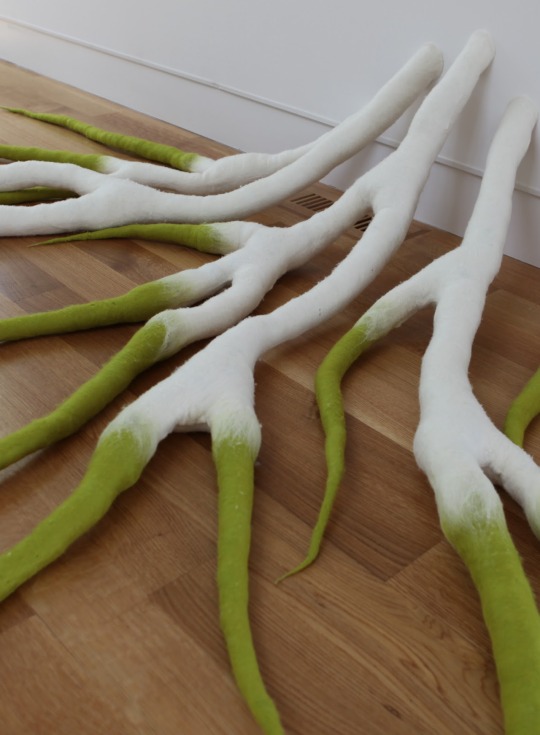

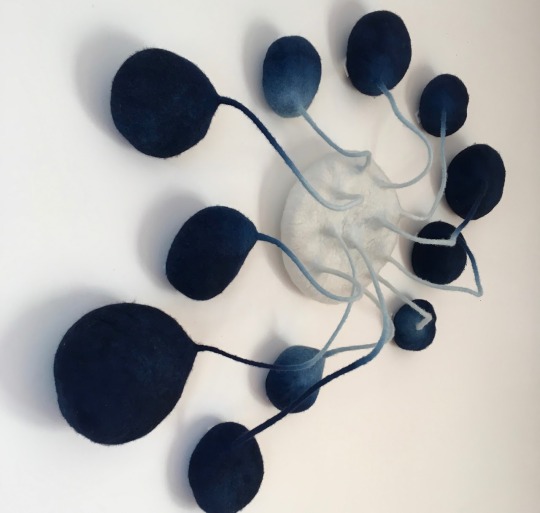
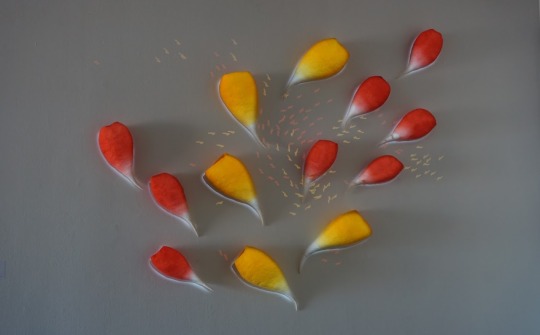
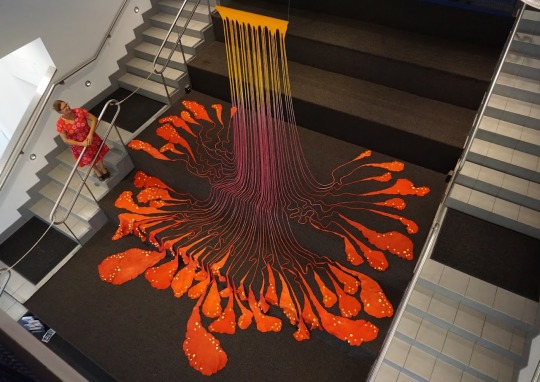



Anna Kristina Goransson is a Swedish sculptor working with felt.
Kristina spent her childhood in northern Sweden before moving to the United States in 1985. Art has always been a significant part of her life, helping her through not knowing English when she arrived in the states. Kristina entered more structured art making as an undergraduate at Rhode Island School of Design in 1994 where she received her BFA in Furniture. After graduating she spent two seasons at Anderson Ranch Arts Center assisting classes in the wood program before moving back to the East Coast.
Feeling ready for change, Kristina eventually went back to school for fiber arts at the University of Massachusetts and received her MFA in 2008. During graduate school, Kristina spent the first year exploring different textile techniques until she found felt. Discovering the possibilities that felting had to offer, she spent the rest of her time in graduate school creating felted and dyed sculpture.
49 notes
·
View notes
Text
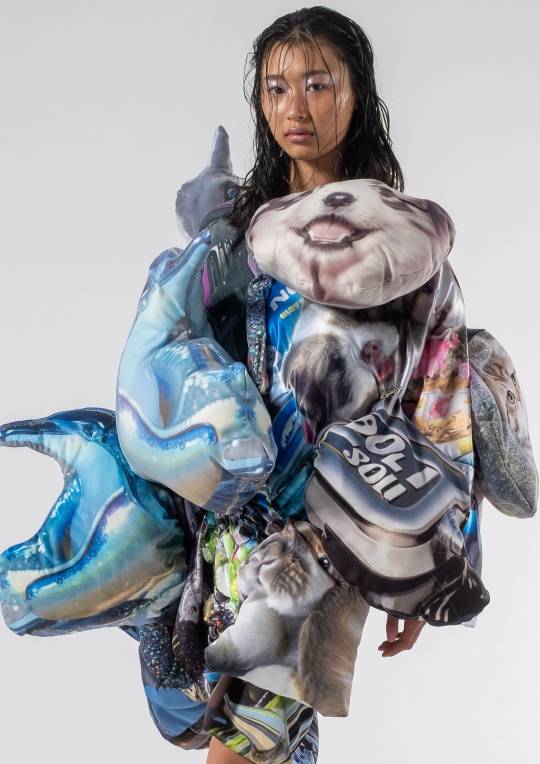
Liana Paberza, Swedish School of Textiles, via Vogue
14 notes
·
View notes
Photo




16th March 2023 // Prince Daniel and Swedish entrepreneurs visited DoTank Center for a round table on entrepreneurship for students from the University of Borås and the Sven Erikson Gymnasium. The day ended with a tour of the Swedish School of Textile's weaving mill and a viewing of the Smart Textiles Showroom, which aims to explore new sustainable solutions in the textile and fashion industry. The visit took place on behalf of Prince Daniel’s Fellowship, an initiative run by the Royal Academy of Engineering Sciences in collaboration with the Prince to inspire young entrepreneurship.
10 notes
·
View notes
Note
What was private school like? I'm assuming you don't have a basis to compare to a public school (and those vary drastically depending on where you're at in the world/country/state/or even within the same city) but maybe you do have thay comparison.
Just curious maybe even to what kind of classes were offered? A school is a school but there has to be something to set a private school in a different category or why would they exist.
💙
I got insecure and googled it, and according to wikipedia a more accurate name is charter school as tuition was free. The admittance is on a first-come, first-served basis.
But it was still different from public school, which I did go to. I started charter school in 6th grade and then went to a public high school afterwards.
My specific charter school is called Kunskapsskolan (knowledge school) and surprisingly, out of 80 schools, only 36 are in Sweden. (Apparently, they have schools in the UK, USA, the Netherlands, India, and Saudi Arabia. Although Wikipedia uses the word sponsored for them so they might not operate the same?)
Anyway.
It was a very individual learning plan; the subjects were split into steps and courses. You had a step goal for the step subjects since that was completely under the student's control, and then a grade goal for the rest as the course classes had group projects, while music, art, and phys ed were weekly classes.
The classes in another province were home ec, wood shop, textile shop/sewing, and engineering. Engineering tended to be part of the courses. I only chose sewing once, and that was the time I didn't go lol
For those classes, you had two classes each day; one subject before lunch and one after.
The rest of the year, you planned your schedule each morning in a logbook and then your homeroom teacher had to sign off on it.
For the step subjects (swedish, english, modern language, math), there were workshops hosted by teachers if you wanted to be able to ask for help. Otherwise, there were computers or group rooms that you could use to study on your own or with classmates.
For the course subjects, there were obligatory lectures and seminars.
Every fifth step, you had to show your work to a teacher, and there were certain things you had to do in class, so planning your schedule was important.
Of course, this whole step system meant that you could skip school very easily. You just had to be back for homeroom at the end of the day, and not miss any obligatory stuff. I took some very long lunch breaks and afternoon breaks.
And it was very easy to use the computers for other things. I wrote a lot of fanfiction for a certain magic school fandom, made games using powerpoint, and went on forums. I also wrote a lot of poetry during this time.
There was also one year that I had a lot going on and just fully skipped phys ed, but never got told off, and I also got a passing grade. (This coincided with the year that one of the math/science teachers was also teaching phys ed, at least for my class.)
Oh, and my homeroom teacher married the music teacher. The above-mentioned year, she was on parental leave. My class and the music teacher's class got to see their home in 9th grade. They had made a quiz where each answer was a student; I was the answer for a question about Alice in Wonderland.
(Each grade had 4 classes, I was in class 2 and the music teacher was responsible for class 4. The labeling was grade-class so I was in 6-2, 7-2, 8-2 and 9-2.)
Other fun facts to throw in is that the school used to be a mental hospital. There was a locked building on the grounds full of old hospital beds and stuff, but the windows were blocked so you couldn't really see in. I had a friend in the grade above that was a medium and said the school was haunted.
My class had a sleepover at the school in ninth grade, as our fun graduation thing.
Oh, and there was a yearly, student written musical. I never ended up being brave enough to participate but they were fun to watch!
12 notes
·
View notes
Photo
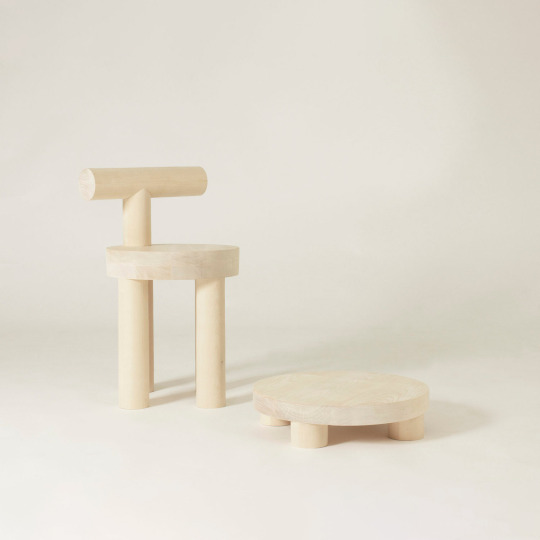
This is Björk is a minimal collection of pieces designed by Jule Milz, presented at New Contemporary for Stockholm Creative Edition. The 2022 exhibition New Contemporary supports and celebrates new generations of designers. Initiated by Stockholm Creative Edition, in collaboration with Svensk Form and Beckmans College of Design, this open call exhibition features designers who graduated from Swedish design schools in the past five years. New talented designers will showcase furniture, lighting, textiles, and handcraft at Sveavägen 6B in Stockholm.
14 notes
·
View notes
Text
Positioning Indian Textile Recycling Ecosystem Globally: Setting the strategic intervention areas for future road mapping
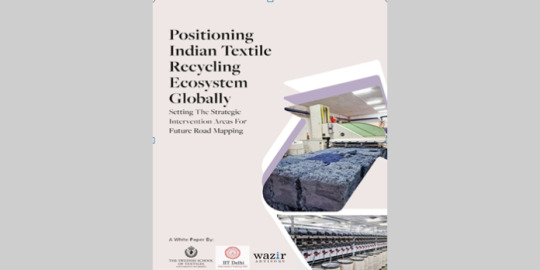
Wazir Advisors, The Swedish School of Textiles - University of Boras, and Indian Institute of Technology, Delhi have today released a whitepaper titled ‘Positioning Indian textile recycling ecosystem globally: Setting the strategic intervention areas for future road mapping’. It aims to promote a cross-border textile recycling value chain, align market supply and demand, and foster innovation and PPPs with government support.
The whitepaper explores four key dimensions essential for scaling textile recycling ecosystems and their underlying value chains: optimizing the value chain, aligning supply with market demand, crafting sustainable ecosystem designs, and garnering external support to ensure equity among value chain participants. The report also identifies 13 Strategic Intervention Areas (SIAs) crucial for enhancing and valorizing the Indian textile recycling ecosystem.
Authors of the report, Prof. Rudrajeet Pal (Professor of Textile Value Chain at The Swedish School of Textiles, Univ. of Borås), Prof. Abhijit Majumdar (Chaired Professor at Department of Textile & Fiber Engineering, IIT Delhi), and Mr. Varun Vaid (Business Director, Wazir Advisors), stated "we believe this whitepaper is a critical step forward in building a sustainable and competitive textile recycling ecosystem in India. By identifying the key strategic intervention areas, we aim to catalyze collaboration and innovation across the industry, ultimately driving economic growth and environmental stewardship."
The report's insights are rooted in extensive research and field activities that began in 2016 at The Swedish School of Textiles, focusing on Kandla SEZ and Panipat. This effort encompasses over 25 interviews, more than 20 site visits, and a brainstorming session featuring over 20 sector stakeholders.
“This paves the path for more strategic interventions initiated already through our partnership, with grant received from Indo-Swedish funding agencies, and we believe that the outcomes will be of immense benefit to inform both practice and policy. We are currently developing a data-driven tool for decision support that will make it easier for companies and business support organizations to work in the complex textile recycling value chain”, added the authors.
The digital copy of the whitepaper is available on request.
0 notes
Text

Neneh Mariann Karlsson (born March 10, 1964) known as Neneh Cherry, is a Swedish singer-songwriter, rapper, occasional DJ, and broadcaster. Her musical career started in London in the early 1980s, where she performed in several punk and post-punk bands in her youth, including the Slits and Rip Rig + Panic.
She has released six studio albums under her name. Her first, Raw Like Sushi, was released in 1989 and peaked at #3 on the UK Album Chart, due to the hit single “Buffalo Stance”. Her second studio album was 1992’s Homebrew. Four years later she released Man, with her next studio album, Blank Project, coming in 2014. Her most recent album, The Versions, was released in 2022. She formed the band cirKus in 2006 and has collaborated with the Thing, releasing an album entitled The Cherry Thing in 2012. She has won two Brit Awards and an MTV Europe Music Award. She has been nominated for a Grammy Award.
She was born in Stockholm, Sweden, the daughter of Monika “Moki” Karlsson, a Swedish painter and textile artist, and the musician Ahmadu Jah. She has a half-brother, musician Eagle-Eye Cherry. From stepfather Don Cherry’s side, she has a stepsister, violinist Jan Cherry, and a stepbrother, jazz musician David Ornette Cherry. Through her father Ahmadu Jah’s marriage to Maylen Jah (née Bergström), Cherry is the half-sister of singer Titiyo and record producer Cherno Jah.
Cherry dropped out of school at age 14 and moved to London.
She married drummer Bruce Smith (1983-84) and had a daughter.
She married producer and Morgan-McVey (1990). They have two daughters: singers Tyson and Mabel McVey. #africanhistory365 #africanexcellence #womenshistorymonth
0 notes
Text
WEEK 6: SLOW FASHION MOVEMENT
What is Slow-Fashion?
Currently, the fashion industry is rife with inconsistencies. Individuals claim to be interested in sustainability but nevertheless gravitate towards rapid and affordable clothes (Johansson, 2010).

An increasing number of customers are participating in the trend of 'ethical consumerism,' where they insist that the products they purchase be manufactured in a manner that does not negatively impact the environment or the laborers involved in the production process. Research has shown that customers are often prepared to pay a higher price for environmentally friendly items or commodities produced without exploiting labor (Gam et al., 2009; Kahn, 2009; Pookulangara et al., 2011), which is considered as "slow fashion".
Where does this movement come from?
The emerging "Slow Fashion" movement is inspired by the well-known "slow food" movement, which focuses on supporting small, local farmers and promoting the use of local, seasonal foods, in addition to stressing slow cooking techniques (Kahn, 2009). Slow fashion is a philosophy that focuses on being attentive to the needs of designers, buyers, retailers, and consumers, as well as the impact that fashion production has on workers, consumers, and ecosystems (Fletcher, 2008).

The slow fashion idea emphasizes sustainability in the fashion industry by focusing on high quality, small-scale manufacturing, regional sourcing, and ethical labor practices. One of the most iconic brand named "Patagonia", made its name in the community for its sustainability efforts, such as using recycled materials, minimizing water use, and advocating for fair work. The firm has introduced a program called Worn Wear, which promotes repairing and reusing Patagonia goods instead of purchasing new ones.

Patagonia has contributed significant funds to environmental organizations and launched programs to increase awareness of climate change and biodiversity loss. Therefore, sustainability is becoming a central focus for the garment sector, influencing strategy, operations, employee involvement, and relationships with customers and communities (Siegel et al., 2012).
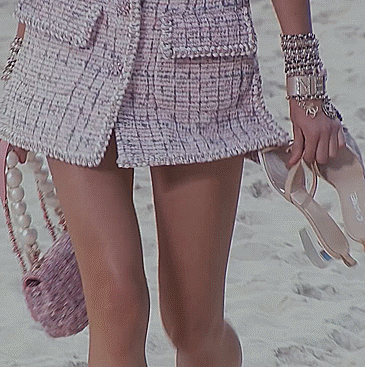
Reference:
Johansson, E., 2010. Slow Fashion—An Answer for a Sustainable Fashion Industry?
(Master’s thesis, The Swedish School of Textiles, University of Boras, Bor ˚ as, ˚ Sweden). Retrieved from /http://bada.hb.se/bitstream/2320/6776/1/2010.9.
15.pdfS.
Gam, H.J., Cao, H., Farr, C., Heine, L., 2009. C2CAD: a sustainable apparel design and production model. International Journal of Clothing Science and Technology 21 (4), 166–179, http://dx.doi.org/10.1108/90556220910959954.
Kahn, J., 2009. Luxury-goods Makers Embrace Sustainability. New York Times. Retrieved on November 4, 2010 from: /http://www.nytimes.com/2009/03/27/business/worldbusiness/27iht-sustain.html?_r=2&scp=4&sq=sustainable% 20luxury&st=cseS.
Fletcher, K., 2008. Sustainable Fashion and Textiles: Design Journeys. Earthscan, London and Sterling, VA.
Siegel, A., Burnside, M., Kester, C., Howes, T., & Robertson, K., 2012. Retail Sustainability Report: Successes, Challenges, and a Vision for the Future. Retail Industry Leaders Association. Retrieved on September 22, 2012 from /http://
www.rila.org/sustainability/sustreport/sustainability-report-landing-page/Documents/RetailSustainabilityReport.pdfS.
0 notes
Photo

Mikaela-Mårtensson for The Swedish School of Textiles, Stockholm Spring 2022
60 notes
·
View notes
Text
Week 7: Slow Fashion
Rapid production, short lead times, and an increase in the number of fashion seasons with less expensive labor and materials have been common practices in the apparel industry for decades (Bhardwaj & Fairhurst, cited in Jung & Jin 2014, p.512). Most frequently, the term "fast fashion" refers to a business strategy that establishes an effective supply chain in order to quickly produce trendy goods while meeting consumer demand (Levy and Weitz, cited in Watson & Yan 2008, p. 141). Major clothing retailers like Zara, H&M, and Forever 21 have adopted this fast fashion business strategy. Quick-changing fashion trends nowadays have produced "perishable fashion clothes" by purposefully reducing the product's lifespan, leading to "clothes to be worn 10 times" (Byun and Sternquist, cited in Jung & Jin 2014, p.512).
To tackle this issue, retailers who create durable clothing that is typically not in response to rapidly shifting fashion trends are frequently labelled as practising "slow fashion”. Slow fashion came in place where it is about designing, producing, consuming and living better by considering environmental and social sustainability and by producing beautiful and conscientious garments at a lower speed. Slow fashion is not just about slowing down the pace of fashion cycle, it is rather a shift in mindset of the consumers from focusing on quantity to quality (Fletcher, cited in Jung & Jin 2014, p. 512). Slow fashion incorporates concepts such as using greener fibres, utilizing technology to reduce waste and pollution, or taking into account the movement of the product through the supply chain.
People are becoming more aware of "ethical consumerism," in which consumers demand environmentally friendly goods or the workers who made them. Studies have indicated that consumers are often willing to pay more for “green” products or “sweat-free” goods. It is good to see the tendency that people are aware on environmental issues as well as fair work in the fashion industry and are starting to demand organic materials and clothes (Johansson 2010).
Most millennials in particular those born between the early 1980s and the early 21st century have a strong affinity for technology and they will to live a modest lifestyle because they were born during a time when concepts like "sustainability," "fair trade," "authenticity," "organic," and "artisanal" were popular (Yazici, cited in Araujo 2022, p. 621). Therefore, it is best for designers, manufacturers, distributors and retailers to understand how millennials consume through their habits and desires to be more sustainable in the fashion industry. In conclusion, slow fashion is a movement that aims to change culture by enlightening customers and giving them access to better-made, more durable products. That said, slow fashion is more likely to grow in popularity over the next years.

References
ARAÚJO, MKFD, MESQUITA, RFD, MATOS, FRN & SOBREIRA, MDC 2022, ‘FASHION CONSUMPTION PRACTICES OF MILLENNIALS WOMEN: BETWEEN FAST AND SLOW FASHION’, Revista de administração da UFSM, vol. 15, no. 4, p. 621.
Johansson, E 2010, ‘Slow Fashion- the answer for a sustainable fashion industry?', The Swedish School of Textiles, 15 September, viewed 14 June 2023, < https://www.diva-portal.org/smash/get/diva2:1312116/FULLTEXT01.pdf>
Jung, S & Jin, B 2014, ‘theoretical investigation of slow fashion: sustainable future of the apparel industry’, International journal of consumer studies, vol. 38, no. 5, p. 512.
Zarley Watson, M & Yan, R-N 2013, ‘An exploratory study of the decision processes of fast versus slow fashion consumers’, Journal of fashion marketing and management, vol. 17, no. 2, p. 141.
0 notes
Text
References
www.google.com. (n.d.). trend definition - Google Search. [online] Available at: https://www.google.com/search?q=trend+definition&rlz=1C1CHBF_en-GBGB970GB970&oq=trend+de&aqs=chrome.1.69i57j0i512l4j46i175i199i512j0i512l4.2982j0j7&sourceid=chrome&ie=UTF-8 [Accessed 10 Jan. 2023].
Berden, B. and Berden, B. (2019). Mirrored Realms. [online] Mirrored Realms | LS:N Global. Available at: https://www.lsnglobal.com/design-directions/article/24372/mirrored-realms.
Raymond, M. (2010). The Trend Forecaster’s Handbook. London Laurence King Publishing.
Holland, G, Jones, R Fashion Trend Forecasting 2017: 53 & 130
Bbc.co.uk. (2015). BBC NEWS | UK | Magazine | The life cycle of a fashion trend. [online] Available at: http://news.bbc.co.uk/1/hi/8262788.stm.
Re interview with Andrew Groves, course director for fashion at the University of Westminster
Muggleton, D. (n.d.). Subcultures. [online] LoveToKnow. Available at: https://womens-fashion.lovetoknow.com/womens-fashion-history/subcultures [Accessed 10 Jan. 2023].
Osgerby, B. (n.d.). Teds. [online] Museum of Youth Culture. Available at: https://museumofyouthculture.com/teds/.
Feldman-Barrett, C. (2019). Mods - Museum of Youth Culture. [online] Museum of Youth Culture. Available at: https://museumofyouthculture.com/mods/.
Cochrane, K. (2017). 1963: the beginning of the feminist movement. [online] the Guardian. Available at: https://www.theguardian.com/lifeandstyle/2013/may/07/1963-beginning-feminist-movement.
Wikipedia Contributors (2019). Mod (subculture). [online] Wikipedia. Available at: https://en.wikipedia.org/wiki/Mod_(subculture).
Victoria and Albert Museum. (2019). V&A · Mary Quant. [online] Available at: https://www.vam.ac.uk/exhibitions/mary-quant.
Adegoke, Y. (2021). Yomi Adegoke: Has The Internet Killed Subcultures? [online] British Vogue. Available at: https://www.vogue.co.uk/arts-and-lifestyle/article/yomi-adegoke-subcultures.
SAM YARI | Director & Fashion Photographer | OFFICIAL. (2021). What are the 3 theories of fashion? [online] Available at: https://samyari.com/theories-of-fashion/.
Babycakes Romero. (n.d.). fashion. [online] Available at: http://babycakesromero.com/category/fashion/ [Accessed 10 Jan. 2023].
Nast, C. (2018). The Top 10 Fashion Trends Of Autumn/Winter 2018/2019. [online] British Vogue. Available at: https://www.vogue.co.uk/gallery/autumn-winter-2018-trends [Accessed 10 Jan. 2023].
Greenstrategy.se. (2012). SEVEN FORMS OF SUSTAINABLE FASHION. [online] Available at: https://www.greenstrategy.se/sustainable-fashion/seven-forms-of-sustainable-fashion/.
www.stellamccartney.com. (n.d.). Eco-friendly Clothing | Ethical Fashion | Stella McCartney US. [online] Available at: https://www.stellamccartney.com/experience/en/sustainability/themes/circular-solutions/ [Accessed 10 Jan. 2023].
1granary.com. (n.d.). The Swedish School of Textiles 2021: Alternative approaches and zero waste solutions - 1 Granary. [online] Available at: https://1granary.com/designers-3/graduate-shows/the-swedish-school-of-textiles-2021-alternative-approaches-and-zero-waste-solutions/ [Accessed 10 Jan. 2023].
Keng, C. (2018). Shawna Wu: The Knitwear Designer Weaving Emotions And Environmental Sustainability Into Her Clothes. [online] Female Singapore - The Progressive Women’s Fashion & Beauty Magazine. Available at: https://www.femalemag.com.sg/fashion/shawna-wu-knitwear-designer-singapore-parsons-fashion/ [Accessed 10 Jan. 2023].
www.wgsn.com. (n.d.). WGSN Login. [online] Available at: https://www.wgsn.com/fashion/article/93016#page6 [Accessed 10 Jan. 2023].
decorialab (n.d.). Decorialab knitwear Studio www.decorialab.com. [online] Tumblr. Available at: https://decorialab.tumblr.com/post/136902218715/mcq-alexander-mcqueen-look-16 [Accessed 11 Jan. 2023].
Instagram.com. (2020). ioannes (@ioannes.eu) • Instagram photos and videos. [online] Available at: https://www.instagram.com/ioannes.eu/ [Accessed 11 Jan. 2023].
Instagram.com. (2020). 𝑀𝑎𝑛𝑒𝑠𝑠 𝐾𝑜 (@kmymaness) • Instagram photos and videos. [online] Available at: https://www.instagram.com/kmymaness/ [Accessed 11 Jan. 2023].
Matt Peers. (n.d.). Matt Peers. [online] Available at: https://www.mattpeers.photography/ [Accessed 11 Jan. 2023].
www.instagram.com. (n.d.). CAROLINE REZNIK (@carolinereznik) • Instagram photos and videos. [online] Available at: https://www.instagram.com/carolinereznik/ [Accessed 11 Jan. 2023].
Shawna Wu. (n.d.). Shawna Wu. [online] Available at: http://shawnawu.com/ [Accessed 11 Jan. 2023].
0 notes
Text
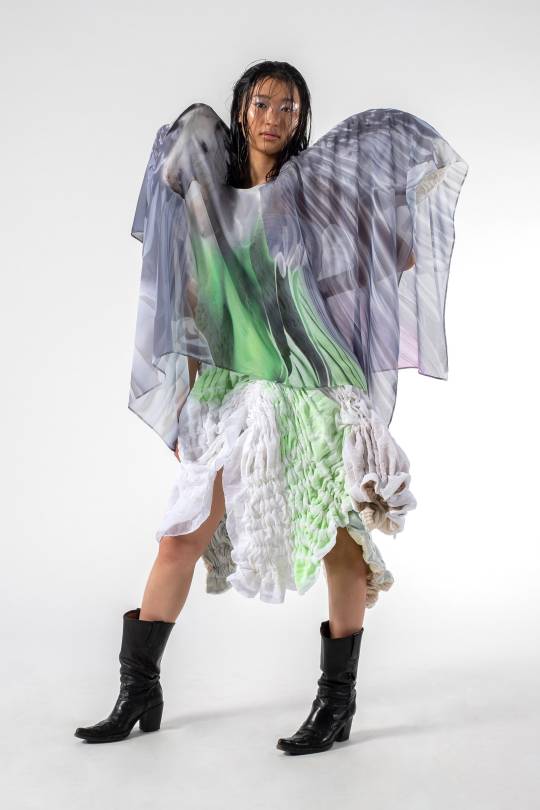
Liana Paberza, Swedish School of Textiles, via Vogue
4 notes
·
View notes



